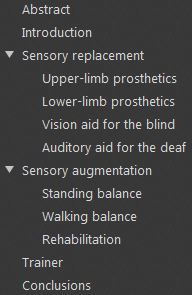 Review introductions are blessedly brief. Most of the information in a review happens in the body section. Thus, the job of the Introduction is simply to orient the reader to the review topic, identify the motivation for the review, and provide a road map of the reader’s journey though the rest of the text.
Review introductions are blessedly brief. Most of the information in a review happens in the body section. Thus, the job of the Introduction is simply to orient the reader to the review topic, identify the motivation for the review, and provide a road map of the reader’s journey though the rest of the text.
The introduction to a Review article has 5 steps. This particular format accomplishes the two functional objectives of the introduction:
- orient the reader to the topic;
- persuade the reader that the author’s perspective is valuable.
The most successful introductions have all 5 steps in the order presented below! Organizationally, steps 1 and 2 comprise the first paragraph, steps 4 and 5 make the final paragraph, while step 3 is as many paragraphs as needed to ensure the reader has the basic concepts needed to follow the rest of the review. (As always, there is variation in the literature! But no professor is going to weep with vexation because you followed this template. On the contrary, s/he will be pleasantly stunned. Make sure to show them this site when you get accused of plagiarism:-)).
- Topic — a general statement of what the Review is about;
- Signficance or Topic — practical, clinical, or research signficance of topic;
- Background of Problem — a brief background framing the review, usually just a few sentences providing key definitions or concepts;
- Gap — what’s missing in the literature (the motivation for the review);
- Overview Statement — usually has 2 parts
- Focus/Purpose — the critical perspective the reviewer is using to organize the body;
- Preview — roadmap of body sections so that reader knows what’s coming up.
Let’s take a look at an example. The first image shows the outline which demonstrates the article as a Review — it consists of topical subheadings, so we know we are not reading experimental research (which is organized using functional headings). Next, we’ll examine each paragraph in turn.
Example || Haptic wearables as sensory replacement, sensory augmentation and trainer – a review
 Analysis: The article is organized according to topical subheadings, bounded by the functional headings, Introduction and Conclusion. The title immediately cues the reader to several pieces of important information: central vocabulary terms indicating content and genre of publication (review). The reader should not be surprised to discover the paper is about technology to replace lost sensory ability or that no experimentation is included.
Analysis: The article is organized according to topical subheadings, bounded by the functional headings, Introduction and Conclusion. The title immediately cues the reader to several pieces of important information: central vocabulary terms indicating content and genre of publication (review). The reader should not be surprised to discover the paper is about technology to replace lost sensory ability or that no experimentation is included.
Writing Tip: Create titles that tell readers what they need to know about a paper! In reviews, titles should minimally include major lexical terms that point to content and the word “review” is really useful, too. It’s an unstated convention to include the genre terms “systematic review” and “meta analysis” if you are writing one of those.
Steps 1 and 2: Topic and Significance
Sensory impairments, including somatosensory, vision, and audition loss can result from a spectrum of injuries and diseases such as limb loss, vision loss, and stroke and have long been known to reduce quality of life and prolong rehabilitation [1, 2]. As the world population ages, the magnitude of these problems will likely increase given the susceptibility to sensory impairments in older populations [3]. In the absence of treatments that completely restore natural sensory function, approaches focused on replacing or augmenting deficits may serve as effective alternatives.
Analysis: The sentences in blue identify the part of the research universe in which we are reading, i.e., sensory impairment. The orange sentences supply practical, real-world significance by pointing out affected populations along with potential treatment.
Step 3: Background and Frame
Human skin has long been recognized as a receptor for communicating information [4]. Skin sensations such as pressure, vibration, and stretch can convey tactile messages that are carried to the brain via afferent nerves [5, 6]. For example, tactile feedback can be used to encode pressure and vibration measurements from a prosthesis to the skin of a user [7]. To train human movement, kinematics can be measured in real time and compared with predefined desired kinematics, and tactile feedback amplitude or frequency can then be modulated proportionally to error signals to alert users of desired changes [8–10]. Similarly, tactile feedback has been used to train repetitive movements such as swimming or gait [11–13] in which case feedback is initiated in periodic pulses instead of continuously. Another approach is the expert-trainee paradigm in which the expert performs movements, which are followed by the trainee via haptic feedback based on the kinematic errors between the expert and trainee [14].
Haptic wearables have the potential to address sensory impairments. We define haptics broadly as the sense of touch and includes vibration, texture, slip, temperature, pain, force and proprioception sensations. Smaller, lighter, and more powerful sensors, actuators, and processors have enabled a recent rise in wearable technology for clinical applications. Wearable systems have been used for performing home rehabilitation, assessing functional activity, detecting movement disorders, improving walking stability, and reducing joint loading [15–17]. These systems give users mobility and the freedom to perform normal tasks in natural environments.
Clinical applications of haptic wearables may be classified by degree of sensory impairment (Fig. 1). Total impairment occurs when sensory function is completely lost, often resulting from damaged, dysfunctional, or missing sensory receptors or pathways such as for the blind and amputees. Total impairment requires sensory replacement either with the same sensing modality or as sensory substitution [18]. Incomplete sensory information may result from noisy, degraded sensory signals coincident with old age or the partial sensory loss from disease or injury. This leads to partial sensory impairment and can further affect function. For example, unilateral vestibular loss decreases postural control, which can lead to difficulties in standing or walking [19]. Haptic wearables may be useful for partial sensory impairment as a means of sensory augmentation facilitating motor control and rehabilitation [20]. In some clinical applications, sensory information remains intact but haptic wearables can be used to correct behavioral deficits such as retraining gait patterns to reduce knee loading for individuals with knee osteoarthritis. In this no impairment case, haptic feedback operates as a trainer, automatically guiding new movement patterns through cutaneous cuing information.
Analysis: Given the title, the reader expects basic information about sensory impairment and a light discussion of how “haptic” and “wearable” intersect. The body paragraphs supply this, and little else. The first paragraph focuses sensory impairment at the level of touch, specifying tactile deficits as the site of impairment. Definitions are provided. Citations end nearly every sentence. Stylistically, these paragraphs make full use of jargon expressed in straightforward sentences that assume some expertise on part of the reader (clear prose does not imply an uninformed audience).
Writing Tip: The length of the background information is usually in direct correlation with the complexity of ideas indicated in the title. As a general rule thumb, there should be one paragraph for each major vocabulary item and relationship. Many reviews have only a single paragraph in this part!
Steps 4 and 5: Gap/Motivation and Overview
Due to recent rapidly increasing interest in wearables for clinical, research, and commercial purposes, there is a need to clearly present the state-of-the-art as it relates to impairments and rehabilitation. Thus, the purpose of this review is to examine haptic wearables for applications of varying degree of sensory impairment. While the focus was on portable devices, tethered devices demonstrating clinical benefits of wearable haptic feedback that could be made portable (e.g. battery-powered instead of outlet-powered) were also included. Wearable robotic rehabilitation or powered exoskeleton devices were not included as they have been the subject of previous review [21, 22]. The paper is organized by descending degree of sensory impairment beginning with sensory replacement, then sensory augmentation, and finally trainer.
Analysis: All publication needs motivation; nobody writes anything as difficult as a review paper for fun. The reader needs to know the gap the work addresses (the sentence in green). The gap makes a natural bridge into the purpose of the review; an explicit purpose statement clarifies for both reader and writer the boundaries of what the paper will cover (in red — the following two sentences clarify scope) — in this article, the authors will only be considering wearables addressing haptic-based sensory impairment. Finally, tell the reader what’s coming up! This is the roadmap part of the overview statement (in purple). The order of items in the roadmap statement should mirror the order in the body of the paper.